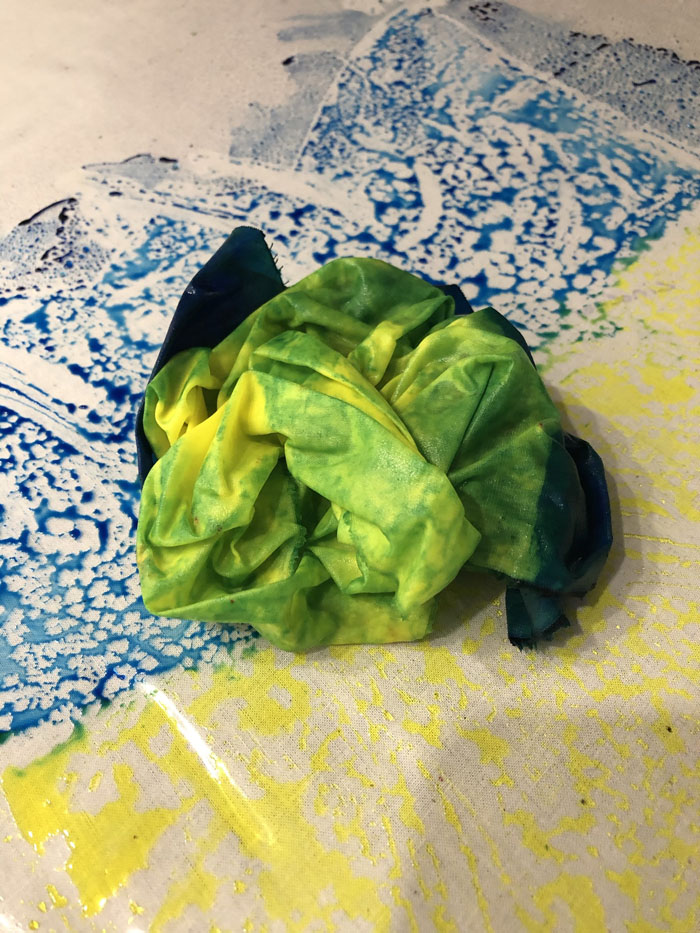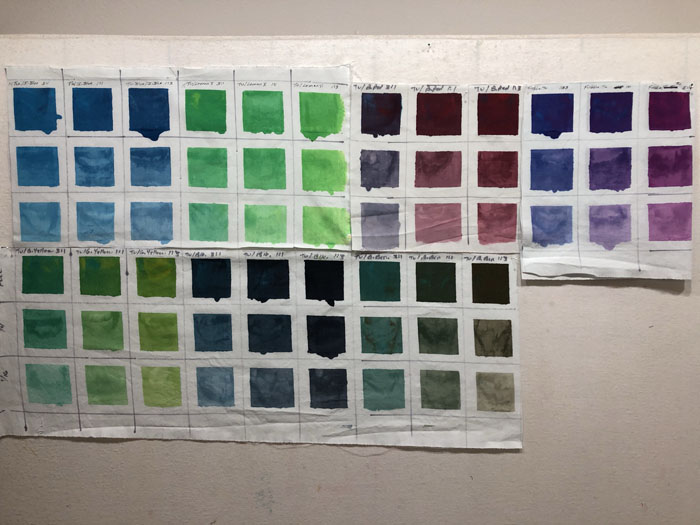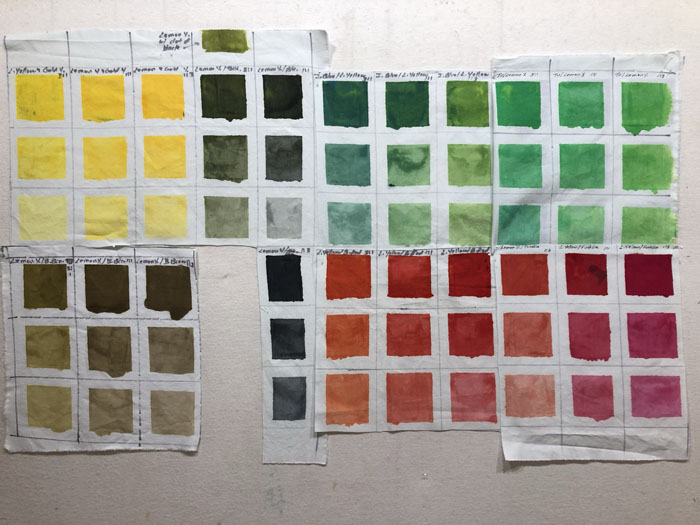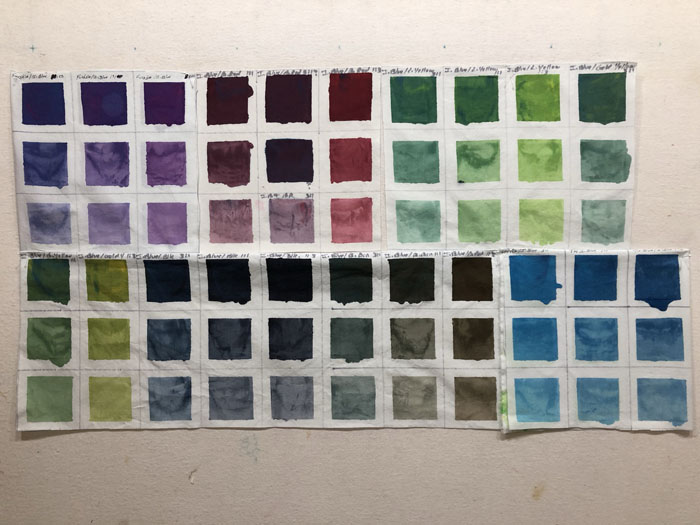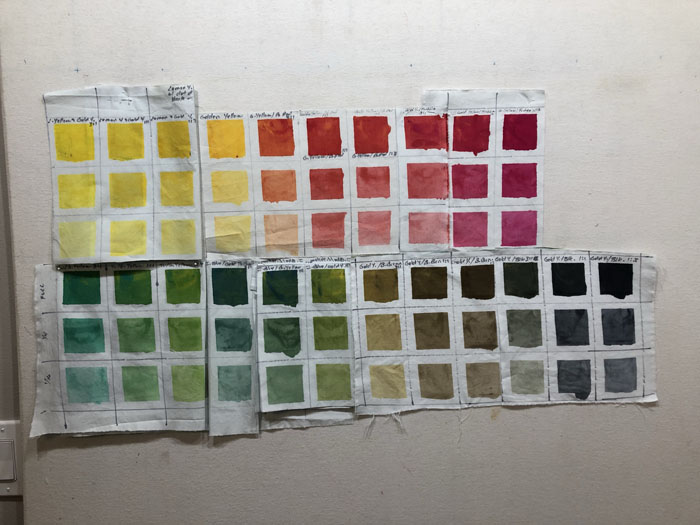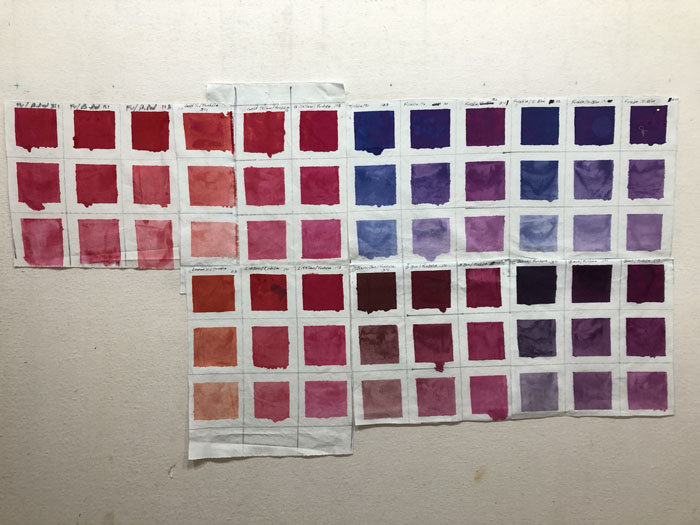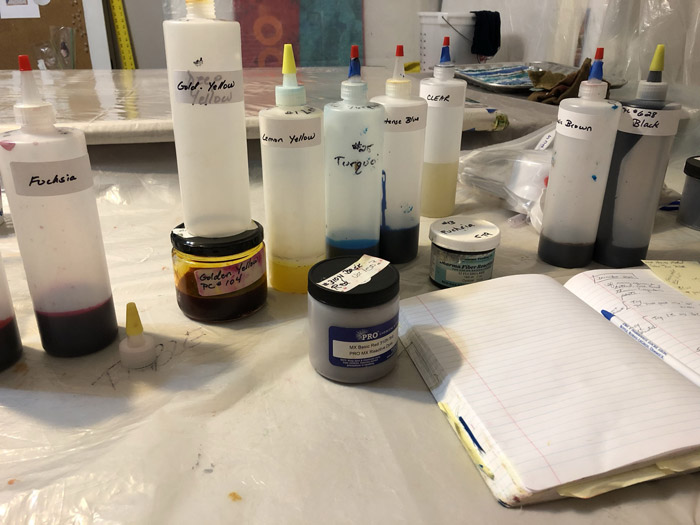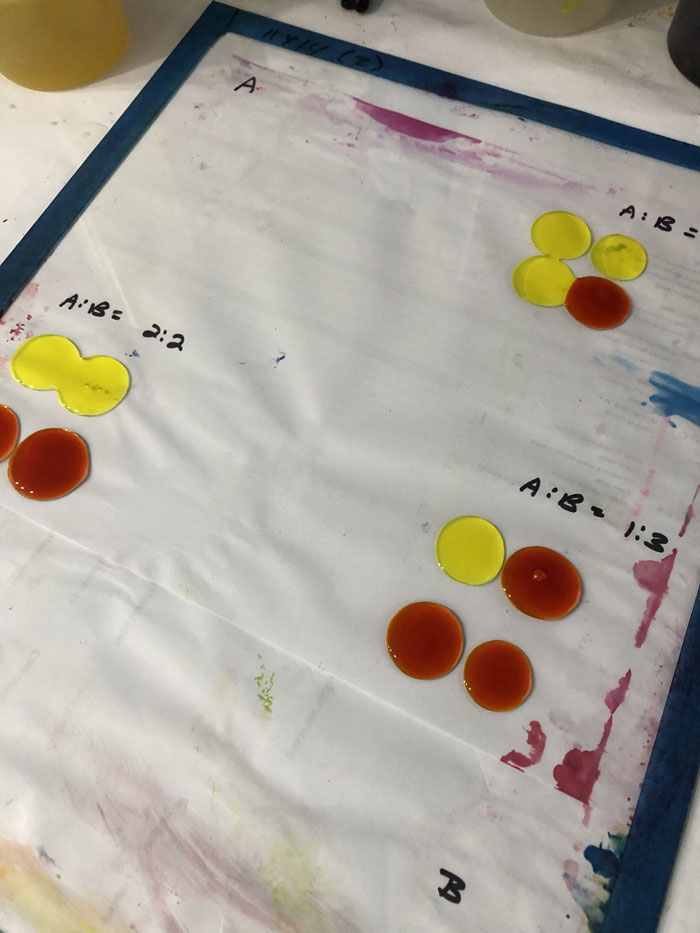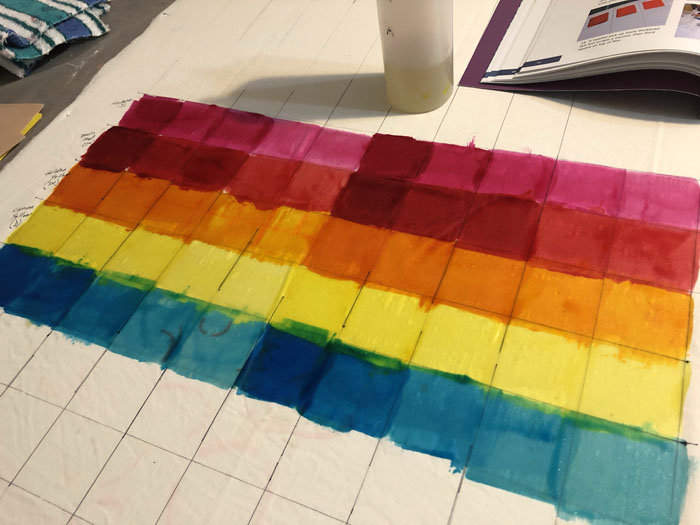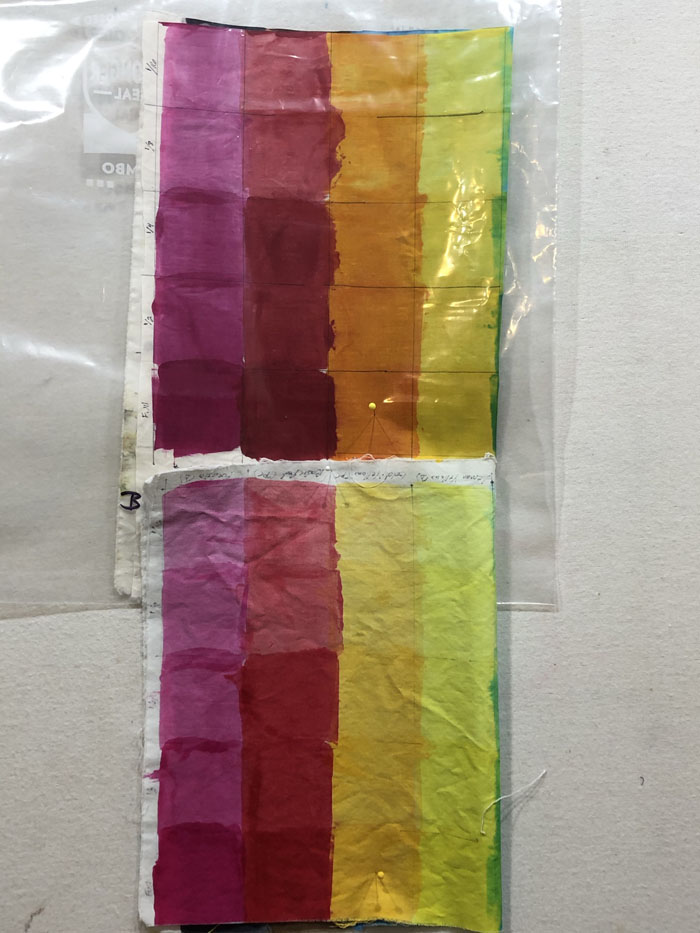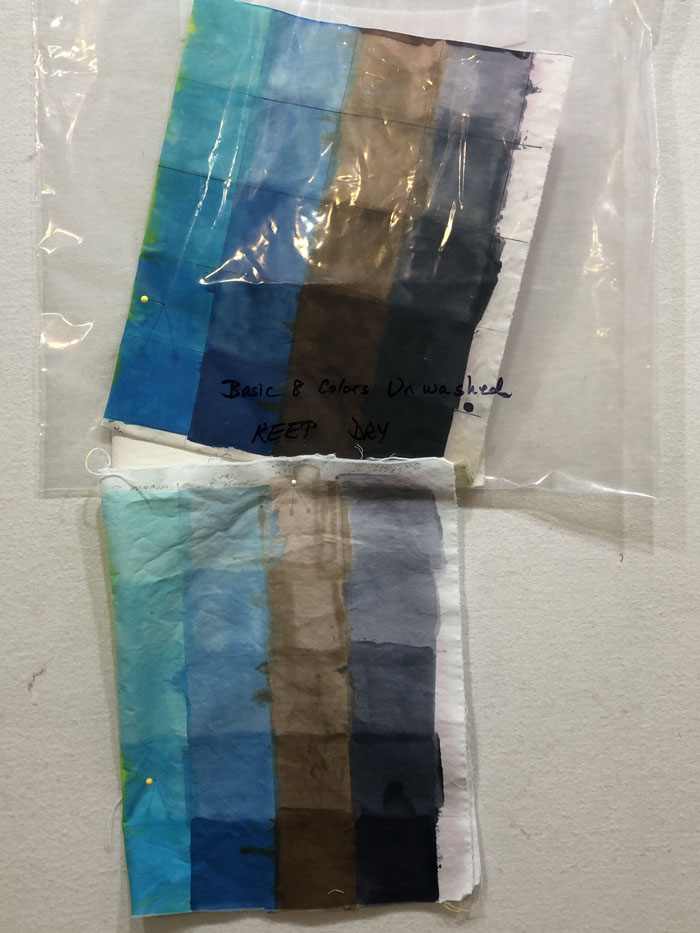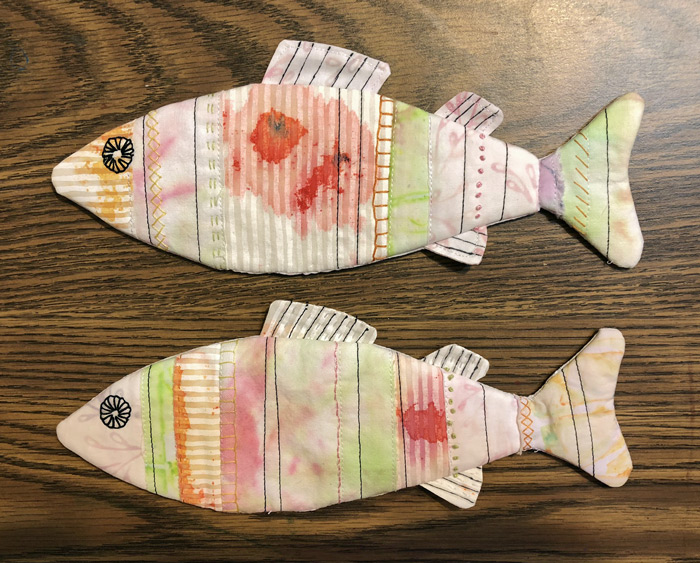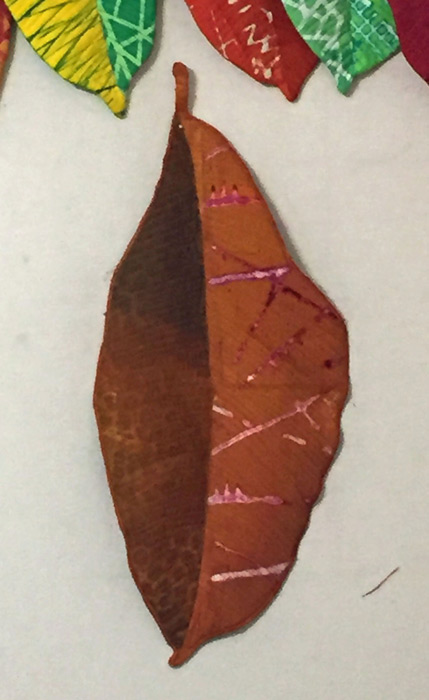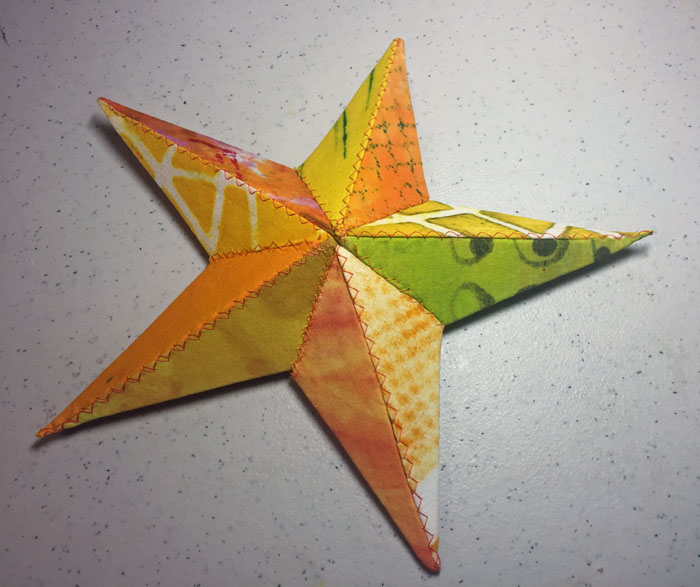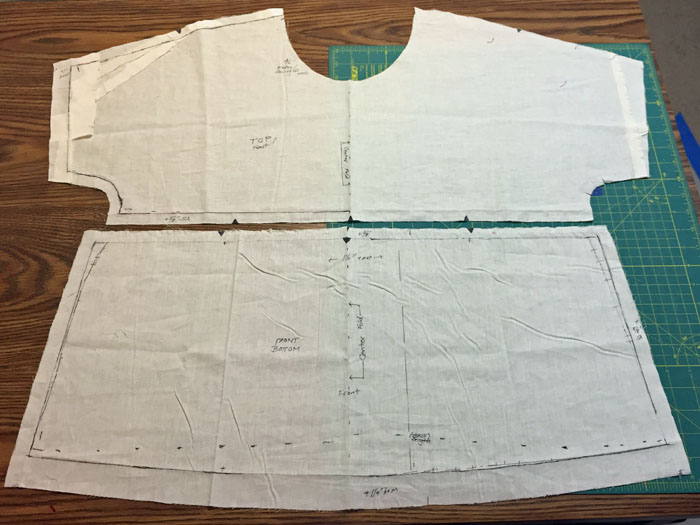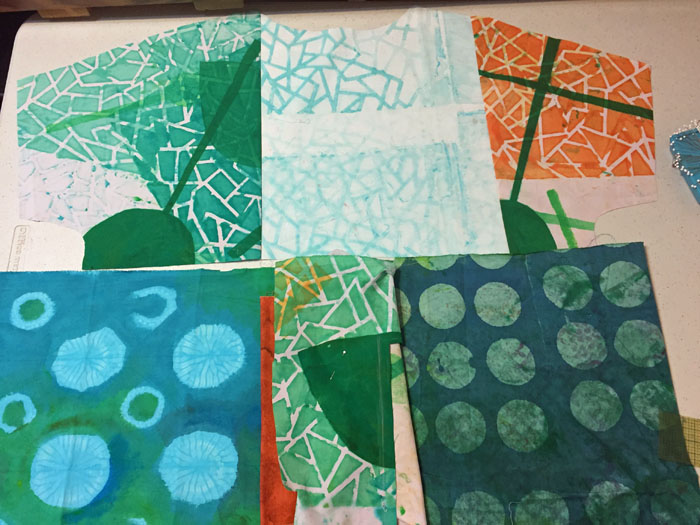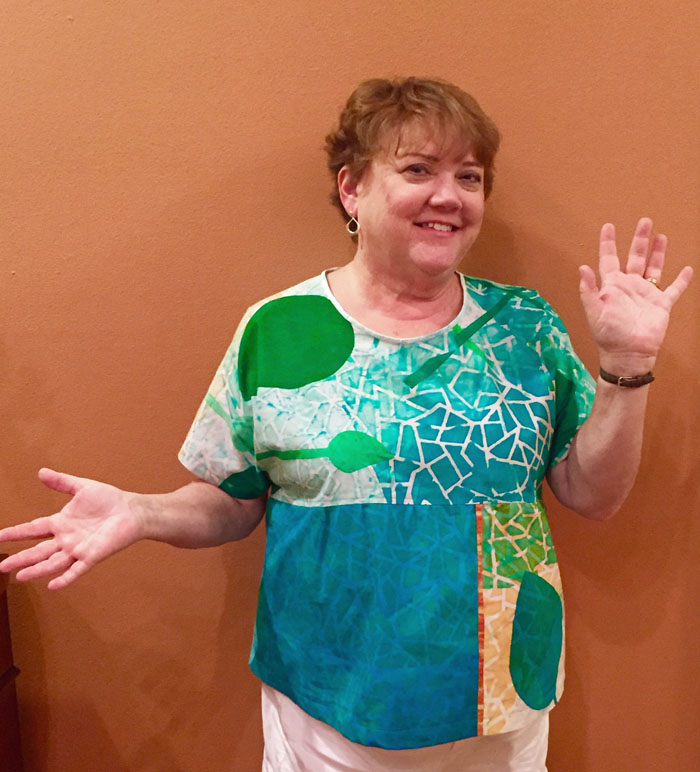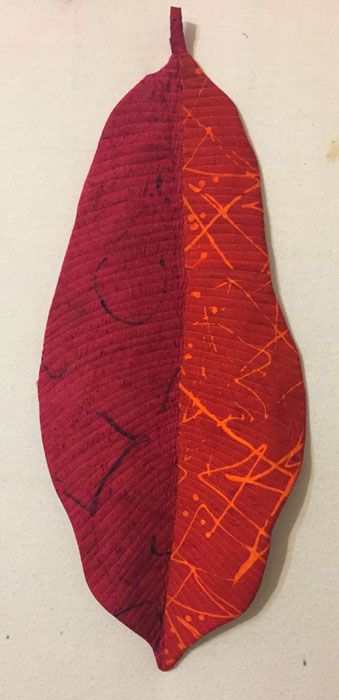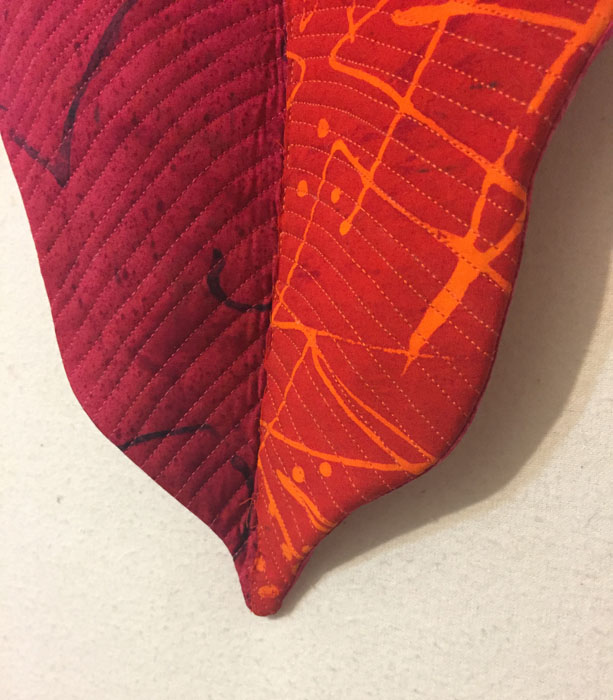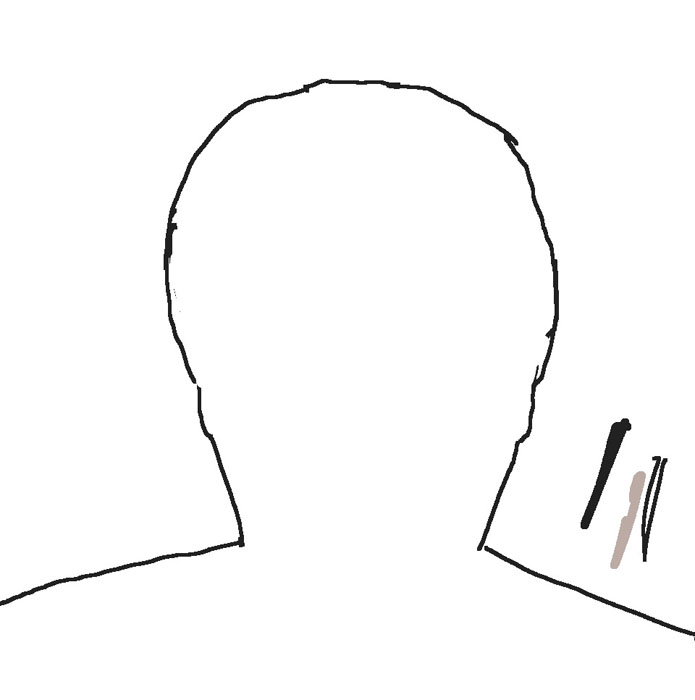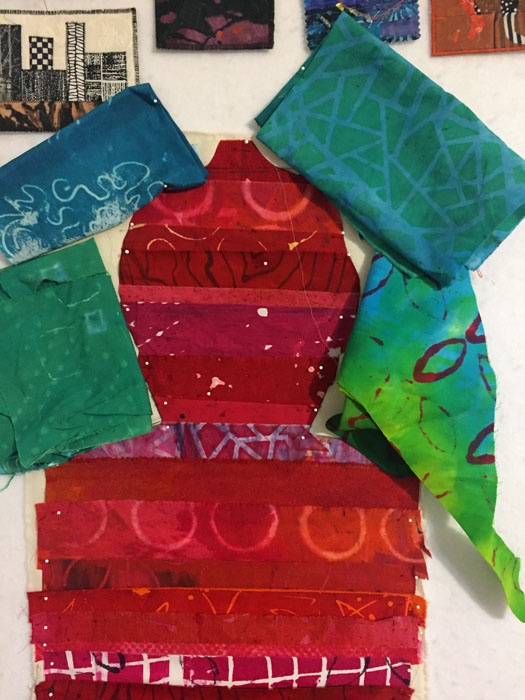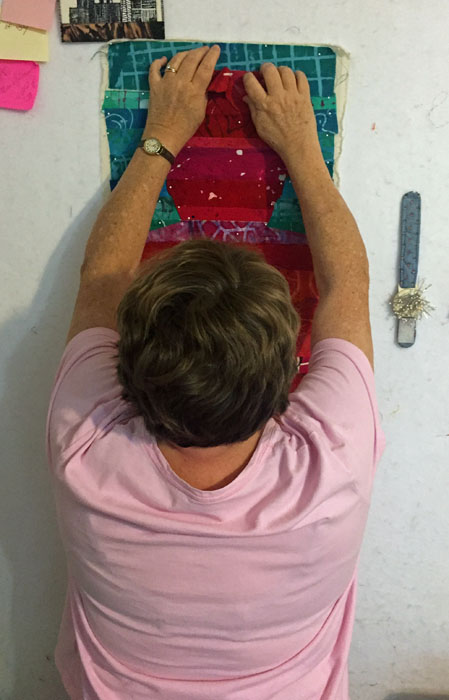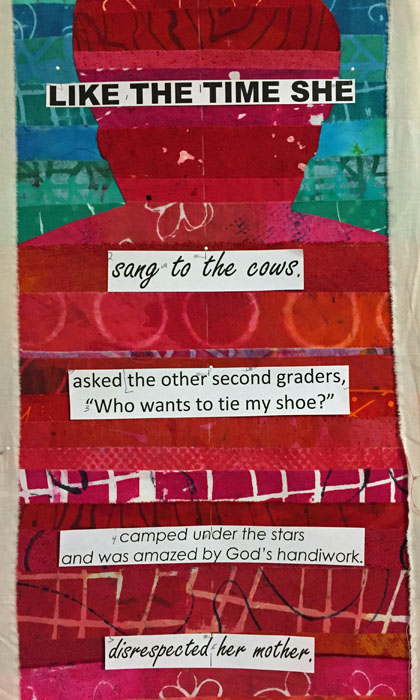In my mind there are two basic types of dyed fabrics: those that can be used for yardage, and those that have specialized patterns. These are a few of my yardage pieces. They fall into this category because I could cut pieces out of them in a variety of places and still get pretty similar designs.
This navy grid is an over dye. The original stripey blue was too dull for my liking, so I added navy on top.
The navy, green, and rust below are also over dyes.

This yellow fabric was a commercial fabric that I tried a lavender rubbing on. It DID NOT look good, but it mostly faded when I washed it. This time, I tried it with an orangey-red. I think it works and that it will be useful.

The navy print, above, was stenciled and the background orange was added last. I would have liked it to be a little brighter, so this one might get an over dye down the road.
I work with thickened dyes. The thickness allows me to stencil and paint with them, knowing they’ll stay where I put them, without bleeding. But, I like that bleeding effect, too, so I did an experiment to see if I could get thickened dyes to bleed effectively. I sprayed the fabric and dye painted the two sides in blue and yellow.
Then I scrunched the fabric up and left it that way to dry. I could immediately see that the two colors were, indeed, blending.
These are the final results. It definitely shows promise. I’ll have to play with it some more.

As you can see, this is just a tiny swatch, but I included it in this post, since I think it will be a yardage technique in the future.
Some of these yardage fabrics aren’t that exciting, but I usually find them to be quite useful.
Ellen Lindner



